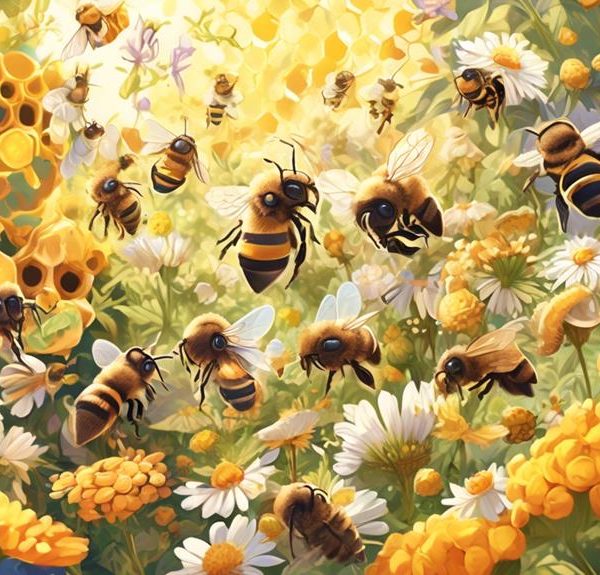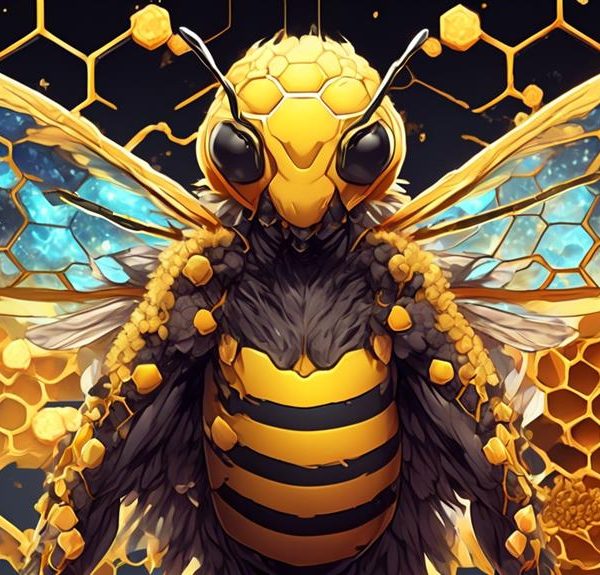Crack the ecological code and discover if bees are more than honey producers, as we explore their intriguing role as possible consumers.

Are Bees Consumers?
You know, it's funny how we can debate whether bees are consumers or just fuzzy little gardeners, all while we humans are unchallenged in our title as the ultimate consumers.
In this discussion, we're going to take a closer look at the role of bees in our environment and determine whether they're more than just honey producers and pollinators. Are they consumers in the ecological sense, or does their contribution to the ecosystem shift their status?
But before we settle this, you need to understand the basics of ecological roles and food chains. It's about to get interesting, so stick with us.
Key Takeaways
- Bees are classified as consumers in the ecosystem, specifically as primary consumers who feed on producers (plants).
- Bees play a vital role in the food chain as they consume primary producers (plants) by feeding on nectar and pollen, and they also transfer pollen for plant reproduction.
- Bees serve a dual role as both pollinators and primary consumers, consuming nectar and pollen for energy and facilitating the reproductive process of plants through pollination.
- The decline of bees poses a significant threat to global food security and ecosystem balance, as their consumption habits greatly impact the environment and economy, including the availability and variety of fruits, vegetables, and nuts.
Understanding Basic Ecosystem Roles
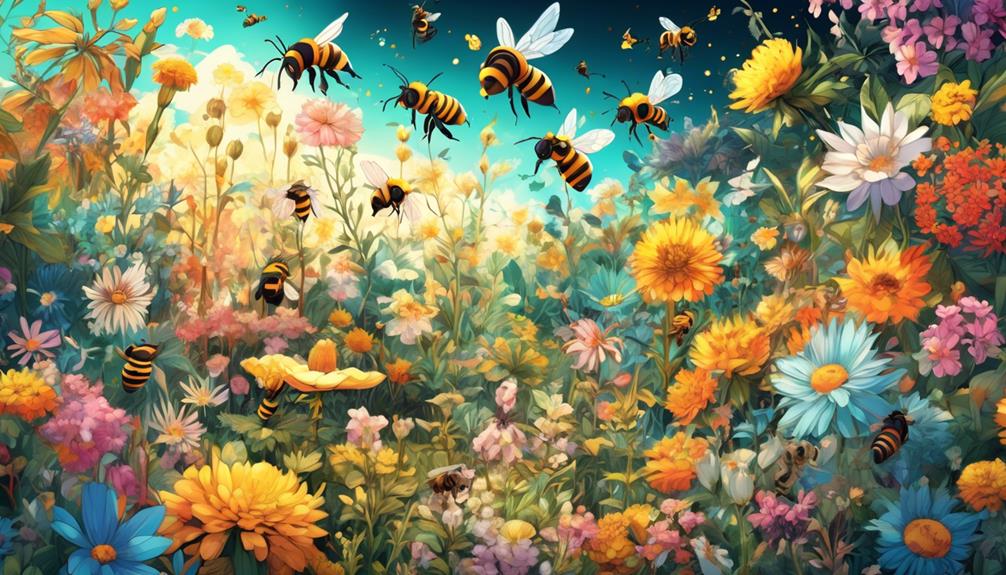
Diving into the understanding of basic ecosystem roles, it's crucial to grasp how different organisms, like bees, function within their environment. You see, every organism in an ecosystem has a specific role, or 'niche,' which defines how it interacts with, and contributes to, its environment.
Bees, as you might already know, are classified as consumers due to their feeding habits. They're not just any consumers, though. They're primary consumers, meaning they directly feed on producers – plants. Bees primarily consume nectar and pollen, which they convert into honey for energy.
However, bees' ecological role extends far beyond their dietary habits. They're also vital pollinators, transferring pollen from the male parts of a flower to the female parts. This process, known as pollination, allows plants to reproduce and generate seeds.
Bee's Role in the Food Chain
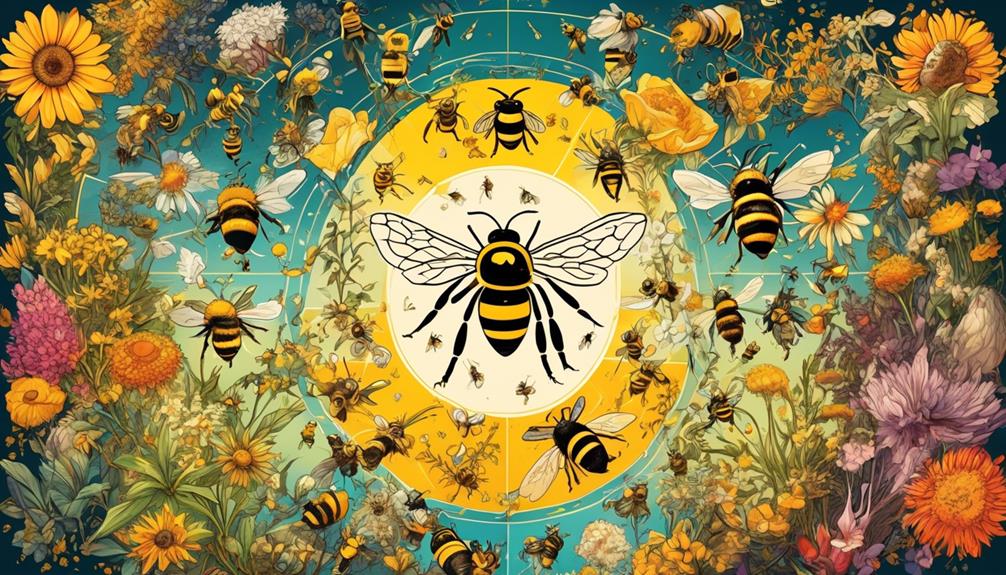
In the grand scheme of the food chain, bees play a pivotal role as primary consumers and indispensable pollinators, bridging the gap between plants and other higher-level consumers. They're not just honey producers or stinging pests; they're essential components of our ecological system. You might even say they're nature's unsung heroes.
Role in Food Chain | Importance |
|---|---|
Primary Consumers | Bees feed on nectar and pollen, thereby consuming primary producers (plants). |
Pollinators | They transfer pollen, enabling plant reproduction. |
Food Source | Bees, particularly their larvae, are prey for various birds and insects. |
Biodiversity Boosters | Their pollination helps maintain plant variety, impacting entire ecosystems. |
Without bees, pollination would be significantly reduced. Many plants, including some of your favorite fruits and vegetables, would struggle to reproduce. This would affect not only these plants but the animals that rely on them for sustenance, causing a ripple effect throughout the food chain. It's a stark reminder that everything in nature is interconnected. So next time you see a bee, don't swat it away. Instead, appreciate its role in sustaining our ecosystems. Your understanding of these tireless workers might just change the way you view the natural world around you.
Defining Consumer in Ecology

Having understood the crucial role bees play as consumers in the food chain, let's now clarify what being a 'consumer' in ecological terms really means. In ecology, consumers refer to organisms that can't produce their own food, so they need to consume other organisms to obtain the energy necessary for survival.
Consumers can be classed into three main categories: primary, secondary, and tertiary. Primary consumers, or herbivores, eat producers like plants which make their own food through photosynthesis. Bees fall into this category, consuming nectar and pollen from plants.
Secondary consumers, or carnivores, eat primary consumers. Lastly, tertiary consumers, also carnivores, eat secondary consumers.
You must also understand the concept of trophic levels. This refers to the position an organism occupies in a food chain. Producers sit at the first trophic level, primary consumers at the second, and so on.
Bees as Pollinators and Consumers

Buzzing from flower to flower, bees serve a dual role in our ecosystem as both pollinators and primary consumers. They feed on nectar and pollen for energy while simultaneously facilitating the reproductive process of plants. They're not just aimlessly flitting about; they're conducting important ecological work.
When you see a bee land on a flower and burrow into its center, it's collecting nectar, a sugary liquid that fuels the bee's own metabolic processes. At the same time, pollen sticks to the bee's body and is transported to the next flower it visits. This cross-pollination enables plants to reproduce.
Bees also consume pollen, a rich protein source needed for their growth and development. They're what ecologists call primary consumers because they feed directly on producers, in this case, plants. This dual role as pollinators and consumers makes them indispensable to our ecosystem.
Their decline, caused by factors such as habitat loss, pesticides, and climate change, is a cause for concern. Without bees, not only would we lose a primary consumer that helps to balance our ecosystems, but we'd also lose a vital pollinator. This threat could have far-reaching consequences for global food security.
The Impact of Bees' Consumption
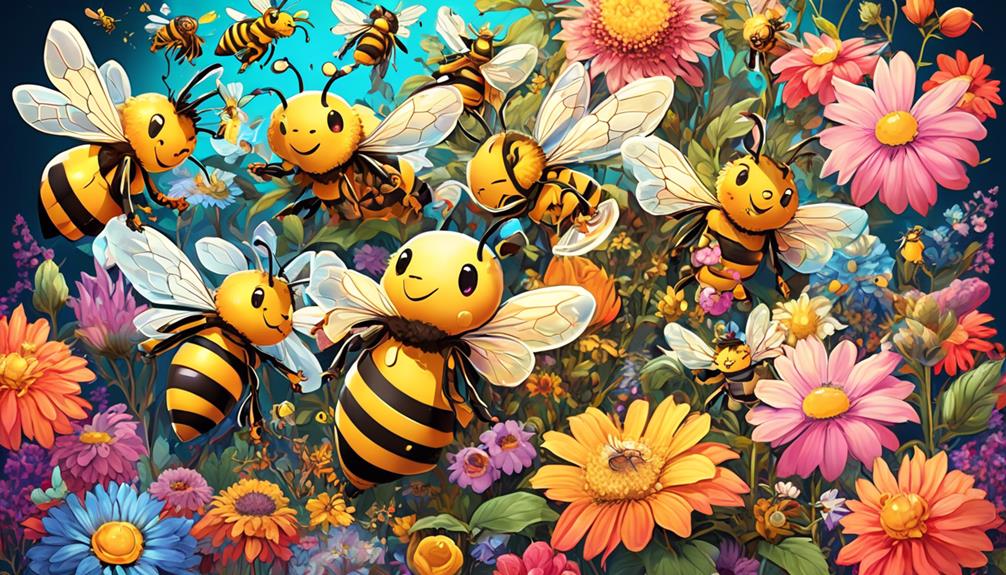
You mightn't realize it, but the consumption habits of bees significantly impact our environment and economy. As they consume nectar and pollen from flowers, bees perform the critical role of pollination. This process is vital for plant reproduction, and it's a linchpin in the global food chain.
When bees visit a flower, they're not just grabbing a snack; they're transferring pollen between plants, promoting genetic diversity and fertilization. This act has a ripple effect that reaches far beyond the bees themselves. It influences the types of plants that thrive in our environment and the diversity of our ecosystems.
From an economic standpoint, bees' consumption habits and their pollination services are invaluable. They're responsible for pollinating crops that make up one-third of the food we eat. Without bees, we'd see a significant drop in the availability and variety of fruits, vegetables, and nuts, which would have a devastating impact on the global food supply and economy.
In short, the consumption habits of bees are more than a matter of survival for these insects; they're integral to the health and diversity of our planet. So, next time you see a bee buzzing from flower to flower, remember the crucial role it's playing.
Balancing Production and Consumption in Bees
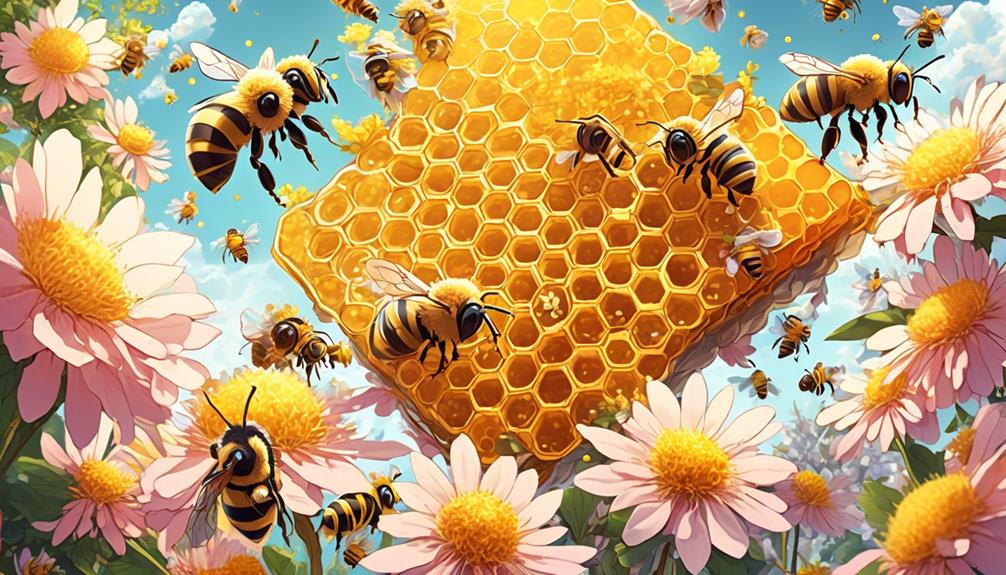
In the intricate world of bees, striking a balance between their consumption of nectar and pollen and their production of honey is a fascinating and vital process. This balance ensures the survival of the hive and maintains the bees' role in the ecosystem.
To further understand, let's consider the following table:
Bee Activity | Energy Required |
|---|---|
Nectar Gathering | High |
Pollen Gathering | Moderate |
Honey Production | Low |
As you can see, nectar and pollen gathering require significant energy. The bees need to consume enough nectar and pollen to sustain these activities, but not so much that it impedes honey production. On the other hand, honey production requires less energy, but it's the bees' primary food source during winter.
Therefore, bees must maintain an equilibrium between consumption and production. They can't consume all the nectar and pollen they gather, or they won't have enough to convert into honey. Nor can they convert everything into honey, or they won't have enough to fuel their nectar and pollen gathering. This constant balancing act is a testament to the bees' remarkable adaptability and survival instincts.
Frequently Asked Questions
What Are the Common Diseases That Can Affect Bees and Their Role as Consumers?"
Common diseases that can affect bees include Colony Collapse Disorder, American Foulbrood, and Varroa Mites. These illnesses can greatly impact a bee's ability to perform its role in the ecosystem. For instance, if a bee is sick, it's less likely to go out and pollinate plants.
That disruption in the food chain can have wide-ranging effects on other species and the environment as a whole. The health of bees is crucial for maintaining balance in nature.
How Can Human Activities and Climate Change Impact Bee Populations and Their Functions in the Ecosystem?"
You're right to worry about human activities and climate change impacting bees. Pollution, habitat loss, and pesticides can all decimate bee populations.
Additionally, changes in temperature and precipitation patterns disrupt bees' natural life cycles. This, in turn, affects their role in pollination and the broader ecosystem.
We must address these issues, as the decline of bees can lead to a decrease in plant diversity and productivity, affecting our food supply.
What Other Organisms in the Ecosystem Play a Similar Role to Bees?"
You're curious about organisms that play similar roles to bees in our ecosystem.
Many insects, like butterflies and moths, also act as pollinators.
Birds such as hummingbirds contribute as well.
Even some mammals, like bats, partake in pollination.
Each of these creatures help in the reproduction of plants by transferring pollen, just as bees do.
It's a diverse group, but all are integral in maintaining the balance and health of our ecosystems.
What Steps Can Be Taken to Protect and Enhance the Population of Bees?"
To protect and enhance the bee population, you'd first want to limit pesticide use, as they're harmful to bees.
You can also plant bee-friendly flowers in your garden, providing them with a rich source of nectar and pollen.
Providing a water source for bees is equally important.
Finally, consider setting up a bee house, an ideal habitat for solitary bees.
Following these steps, you'd be playing a vital role in maintaining our ecosystem's health.
How Does the Consumption Pattern of Bees Change With Seasons?"
You're asking about bees' consumption patterns across seasons.
In spring and summer, bees consume more nectar and pollen as they're readily available. They're busy foraging and feeding broods.
In fall, they gather and store food for winter.
During winter, they consume the stored food to generate heat and survive. Interestingly, their diet alters too, with more honey and less pollen.
Subtle changes in temperatures and resources availability significantly impact these little creatures' consumption patterns.
Conclusion
In conclusion, you've seen how bees play a crucial role in the ecosystem, not just as pollinators but as consumers too. They're part of the intricate food chain, consuming pollen and nectar, impacting plant reproduction and food production.
Their consumption and production balance is integral to ecological health. Understanding their role helps us appreciate their importance and drives us to protect these buzzing creatures for the maintenance of our planet's biodiversity.

